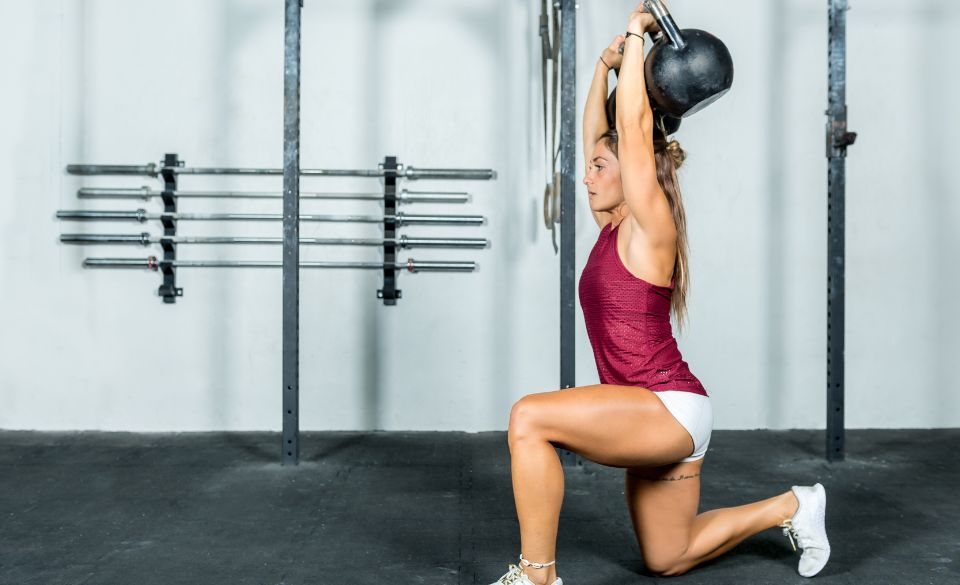
How To Breathe While Lifting Weights: Techniques for Maximizing Strength and Safety
Page Contents
- Breathing and Intra-Abdominal Pressure: The Foundation of Strength
- Breathing Techniques for Different Lifts
- Breathing and Repetition Tempo
- Breathing and Intensity: Adjusting for Different Loads
- The Importance of Breathing for Avoiding Injury
- Breathing and Mind-Muscle Connection
- Breathing for Recovery Between Sets
- Practicing Breathing Outside of the Gym
- Conclusion
If you’re hitting the gym and lifting weights, you already know that proper form and technique are crucial for making gains and preventing injuries. But have you ever thought about the role of breathing during your weightlifting sessions? Breathing is more than just an involuntary action; it can significantly impact your performance, strength, and safety. In this blog post, we’ll explore some effective breathing techniques backed by scientific studies that can help you optimize your weightlifting experience and achieve better results.
Breathing and Intra-Abdominal Pressure: The Foundation of Strength
Before we dive into specific breathing techniques, it’s essential to understand the concept of intra-abdominal pressure (IAP) and its role in weightlifting. IAP refers to the pressure within your abdominal cavity, and it plays a crucial role in stabilizing your spine during heavy lifts.
Research published in the Journal of Strength and Conditioning Research shows that maintaining high IAP can significantly increase strength and stability. One effective way to do this is through the Valsalva maneuver. To perform the Valsalva maneuver, take a deep breath and hold it while you lift the weight. This action creates a rigid core and provides a stable foundation for your lifts. Remember to exhale after completing the lift and inhale again before the next repetition.
Breathing Techniques for Different Lifts
Different weightlifting exercises require specific breathing techniques to optimize your performance and safety. Let’s explore some of the most common lifts and how to breathe during each of them:
a. Squats
Squats are a fundamental compound exercise that engages multiple muscle groups. Proper breathing can enhance your stability and help you lift heavier weights. For squats, use the Valsalva maneuver: take a deep breath before descending into the squat, hold your breath while ascending, and exhale at the top.
b. Deadlifts
Deadlifts are a powerful lift that targets your posterior chain. Breathing correctly is essential to protect your back and maintain stability. Prior to lifting the barbell, take a deep breath, brace your core, and maintain the breath hold throughout the lift. Exhale at the top of the movement.
c. Bench Press
The bench press primarily targets your chest, shoulders, and triceps. To maximize your strength and control during bench presses, inhale deeply before lowering the barbell to your chest. Hold your breath as you push the weight back up, and exhale once you complete the repetition.
Breathing and Repetition Tempo
The tempo at which you perform your repetitions can also impact how you breathe during weightlifting. The two main tempo variations are the concentric and eccentric phases of a lift.
a. Concentric Phase
The concentric phase is when you lift the weight against gravity. For example, during the upward movement in a squat or a bicep curl. During the concentric phase, exhaling can help you generate power and overcome the resistance.
b. Eccentric Phase
The eccentric phase is when you lower the weight, moving with gravity. For instance, the downward movement in a squat or a bicep curl. During the eccentric phase, inhaling can aid in controlling the weight and maintaining stability.
Breathing and Intensity: Adjusting for Different Loads
As the intensity of your weightlifting varies, so should your breathing techniques. For lighter loads or warm-up sets, using a steady and controlled breathing pattern is suitable. However, for heavy lifts near your maximum capacity, the Valsalva maneuver becomes even more critical.
Keep in mind that holding your breath during the Valsalva maneuver should not be prolonged excessively. Take short breath holds during heavy lifts to avoid unnecessary strain on your cardiovascular system.
The Importance of Breathing for Avoiding Injury
Aside from enhancing strength and performance, proper breathing during weightlifting is crucial for injury prevention. As you lift heavy weights, your body is under significant stress, and any slight deviation from proper form can lead to injuries, especially in your spine and joints.
By utilizing the Valsalva maneuver and maintaining intra-abdominal pressure, you create a stable core that acts as a protective shield for your spine. This can help prevent lower back injuries and maintain a safe lifting posture throughout your workouts.
Studies have shown that improper breathing during weightlifting, such as exhaling too early during the concentric phase, can lead to a decrease in stability and an increased risk of injury. Therefore, mastering the right breathing techniques is not just about improving your performance, but also about safeguarding your body from harm.
Breathing and Mind-Muscle Connection
Breathing is not only a physical aspect of weightlifting but also a mental one. Proper breathing techniques can enhance the mind-muscle connection, allowing you to be more present and focused during your lifts.
As you take deep breaths and engage in the Valsalva maneuver, you become more aware of your core and the muscles you are targeting. This increased awareness can lead to better muscle activation, improved technique, and more effective workouts overall.
Additionally, mindful breathing can help reduce feelings of stress and anxiety, promoting a positive and enjoyable lifting experience. When you’re in tune with your breath, you can block out distractions and fully immerse yourself in the moment, pushing yourself to new heights and achieving your fitness goals.
Breathing for Recovery Between Sets
While breathing techniques are essential during your lifts, they also play a role in your recovery between sets. Proper breathing can help you recover faster and prepare your body for the next round of lifts.
After completing a set, focus on taking slow and deep breaths to bring your heart rate back to a more relaxed state. This controlled breathing helps to remove excess carbon dioxide from your body and restore your oxygen levels, aiding in recovery.
Using conscious breathing techniques during your rest intervals can also help reduce stress and anxiety, keeping your mind calm and focused as you approach your next set.
Practicing Breathing Outside of the Gym
Improving your breathing techniques doesn’t have to be limited to your weightlifting sessions. You can incorporate conscious breathing practices into your daily life to enhance your lung capacity, improve your cardiovascular health, and reduce stress.
Consider practicing deep breathing exercises during moments of relaxation or when you find yourself feeling stressed. You can use techniques like diaphragmatic breathing, box breathing, or mindful breathing to reconnect with your breath and promote overall well-being.
Conclusion
Breathing properly while lifting weights is a skill that can significantly impact your performance, strength gains, and safety. Understanding the concept of intra-abdominal pressure and incorporating the Valsalva maneuver can provide a stable foundation for heavy lifts. Different lifts require specific breathing techniques, and adjusting your breathing to the repetition tempo and intensity of your workout is essential.
Remember, weightlifting is not just about moving heavy objects; it’s about performing each lift with precision and control. The next time you step into the gym, pay attention to your breathing and its coordination with your lifts. Practice these breathing techniques consistently, and over time, you’ll notice improvements in your strength, stability, and overall lifting experience.



